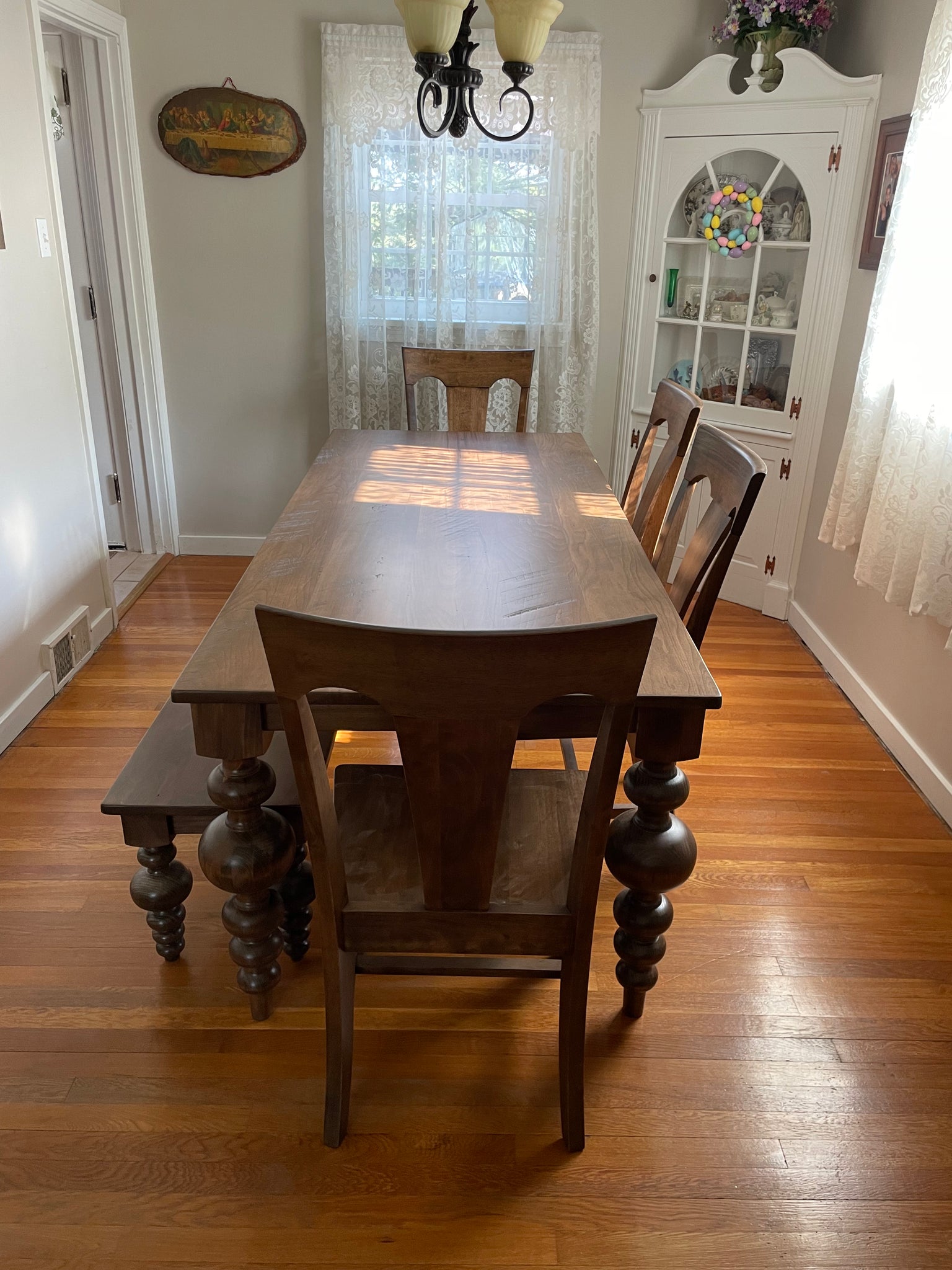The Ultimate Overview to Picking Sturdy Dining Room Table Legs
The Ultimate Overview to Picking Sturdy Dining Room Table Legs
Blog Article
A Thorough Take A Look At Table Leg Styles: Discovering the Ideal Match
Choosing the right eating table leg style is important for both aesthetic charm and practical performance. For those with larger tables, trestle legs make sure sturdy support, whereas barrette legs present a mid-century contemporary ambiance with their minimal style. The x-shaped legs blend modern design with enhanced security.
Conventional Four Legs
Amongst the different kinds of table leg designs, the traditional four-leg design stays a timeless option for several households. This classic setup uses an unified blend of performance and aesthetics, making it a perennial favorite. Four legs offer balanced support, making certain the table remains steady and with the ability of bearing considerable weight. This is especially beneficial for households that often organize huge gatherings or use their dining table for multiple purposes, such as work or crafting.
From a visual perspective, the traditional four-leg style can be conveniently adjusted to numerous interior styles. Whether crafted from wood, metal, or a mix of products, these legs can be intricately carved, sleek and minimalistic, or anything in between. Their versatility permits them to match both rustic and modern setups effortlessly.
Additionally, the straightforward structure of the four-leg design assists in convenience of activity and placement within an area. Unlike more complicated bases, this style decreases blockages, providing adequate legroom for restaurants. In summary, the conventional four-leg table leg style weds withstanding style with practical capability, making it a sharp option for those seeking both form and feature in their eating furniture.
Stand Base
Frequently celebrated for its sophisticated and space-efficient design, the pedestal base is a distinguished alternative to the traditional four-leg arrangement in table leg styles. This distinct base generally features a solitary central column supporting the table top, which can vary in form, from ornately carved wood to streamlined, contemporary metal. One of the key benefits of the stand base is its capacity to make the most of legroom and seating flexibility. Without edge legs, restaurants are managed greater liberty of activity, making it an ideal choice for round and oblong tables that advertise even more intimate and inclusive celebrations.
In addition, the pedestal base's main assistance can handle significant weight, enabling using much heavier tabletops, such as marble or thick wood. This stamina combined with its visual versatility makes the stand base a prominent selection in both standard and contemporary indoor settings. It can perfectly incorporate with numerous design motifs, from classic sophistication to minimalist modernity. Moreover, the central column itself supplies a canvas for intricate styles and imaginative expressions, including an element of aesthetic rate of interest beneath the table. In recap, the stand base integrates functionality with design, making it an improved and functional alternative for varied dining environments.
Trestle Legs
Trestle legs provide a durable and timeless foundation for eating tables, defined by their straight cross-bracing and strong support light beams. Originating from medieval times, this layout has actually advanced yet maintained its crucial framework, making it a perennial fave in click reference both traditional and modern setups. The central trestle light beam, often sustained by two or even more upright posts, uses extraordinary security, enabling bigger table lengths without the demand for extra legs.
A considerable benefit of trestle leg tables is the sufficient legroom they supply. Unlike tables with four corner legs, the lack of obstructions at the table's edges gives unimpeded area for chairs and restaurants, boosting comfort and access. This makes trestle tables perfect for suiting bigger gatherings, whether in a dining-room or a reception hall.
The visual flexibility of trestle legs is notable. Readily available in a variety of materials such as timber, steel, and composite, they can be finished to match a vast array of interior styles. From rustic farmhouse to smooth contemporary layouts, trestle legs can be tailored to suit individual tastes. Their enduring charm and useful benefits make trestle legs a compelling option for those seeking both design and functionality in their table.
Barrette Legs

The allure of hairpin legs depends on their simplicity and adaptability - dining room table legs. Available in a variety of materials, consisting of steel and brass, they can be completed in countless colors to match various interior designs. Whether coupled with a rustic wooden table top or a modern glass surface, hairpin legs effortlessly blend performance with a touch of classic charm
Toughness is another noteworthy function of hairpin legs. Regardless of their delicate appearance, these legs are engineered to bear considerable weight, making certain the dining table remains stable and safe. In addition, they are reasonably easy to install, making them a popular option for DIY fanatics and expert furnishings manufacturers alike.
X-Shaped Legs

Built from products such as steel, timber, or a mix of both, X-shaped legs can be tailored to match various style choices. Steel legs usually lend a smooth and industrial feel, ideal for loft-style apartments and modern-day eating areas.
Additionally, the engineering behind X-shaped legs guarantees also weight circulation, decreasing the risk of wobbling and enhancing sturdiness. This makes them specifically well-suited for larger table that require additional assistance. Fundamentally, X-shaped legs mix practical next engineering with contemporary looks, making them an ageless choice for diverse eating environments.
Conclusion
A detailed understanding of dining table leg designs reveals the distinct characteristics and advantages of each style. Trestle legs guarantee durable support for bigger tables, and barrette legs present a mid-century contemporary aesthetic.
Report this page